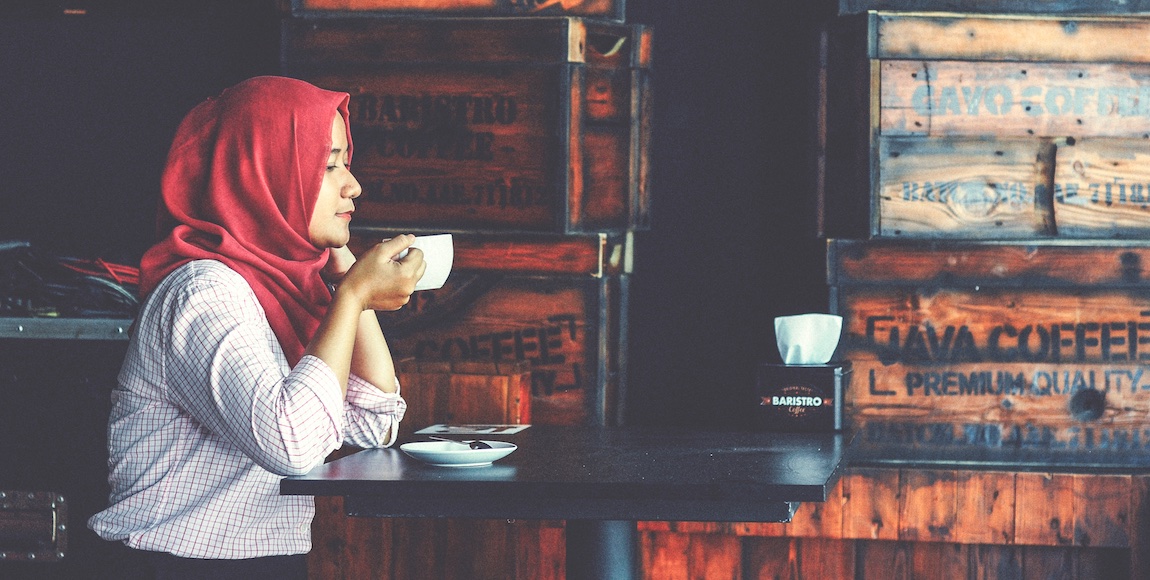Over the past few years, the cloth head covering worn by Muslim women – hijab – has stirred debate and made headlines across the world. Sumera B. Reshi explores the beliefs behind the hijab in the United Arab Emirates.
In France, hijab is banned in public schools. Other European countries have drafted similar legislation. In Turkey, hijab was banned until 2008, when the constitution was amended to ease the ban. Since then, bans on the hijab in state institutions and the police force have also dropped.
This small piece of cloth, which some believe is represents patriarchal oppression in a regressive society, has become a controversial item. Nuanced scholarly contributions exploring the question of women’s agency in relation to veiling practices have come from cultural anthropologist Lila Abu-Lughod and feminist historian Joan Scott.
Scott, responding to the controversy surrounding the 2004 French law on secularity and conspicuous religious symbols, which banned headscarves in schools, criticised the law as racist.
Scott argued that French cultural codes, which are androcentric, expect women to be sexualised and seductive. As such a veiled Muslim body is seen as a threat to this ideal, which reduces women to objects of desire for men. She criticised both the veiling practice among Muslims, and the French ideal of women baring bodies as reflective of men’s control of women’s sexuality.
Abu-Lughod meanwhile argued that Muslim women’s veiling practices reflected their agency. Most Muslim wore different styles of hijab and Muslim women’s fashionable veiling practices could be seen as indicative of an alternative Muslim modernity, she wrote, and moreover, Muslim women’s agency in their everyday lives could not be reduced to veiling practices.
Yet, hijab does not represent or carry the same meaning everywhere. Hijab takes different forms in different cultures and countries.
A view from the United Arab Emirates
While it is compulsory for women in Saudi Arabia to wear hijab, in countries like Bahrain, Kuwait, Oman, Qatar and the United Arab Emirates (UAE) it is not obligatory.
The UAE, a fast growing economy and the most cosmopolitan state in the Middle East, has become a popular destination for immigrant labourers of diverse nationalities seeking employment opportunities and higher standards of living. Indians make up 28% of the Emirates’ total population, and Pakistanis a further 13%. Bangladeshis, Filipinos, Iranians and Egyptians combined make up 22% of the UAE population.
While these communities have absorbed some influences from Emirati culture – many have adopted the dress code, including headscarves – they have preserved many aspects of their cultural identities, including language, ethnic food and clothing.
Many Pakistani women still wear salwaar kameez and Keralites still wear traditional mundu. The younger expat generation is more westernised, preferring skinny jeans and an Arab hijab.
At the country’s busy malls, some women are covered from head to toe while others barely cover their heads with thin, black veils. It’s not unusual to see women wearing chic black or grey hijabs with jeans, tight tops and high heels or abayas modified to reveal the contours of their bodies.
In addition, there are many Muslim women from neighbouring Arab countries who wear some uncommon hijabs. Many of them cover their heads in scarves but flaunt their legs in short skirts. Some wear loose black abayas without headscarves. These women can be seen in the shopping malls, mosques and other public places in the UAE, although such a hijab may not symbolise modesty in most parts of the Muslim world.
I asked hijabistas in the UAE about their motivations for wearing hijab, given that the Emirates do not enforce an Islamic dress code.
“I cover willfully”
Mrs Hossnia, an Emirati in her mid 40s said: “I started covering at the age of 14 and I cover myself willfully. I was never forced by my parents or by husband.” Hossnia wore a black blazer and a trouser with a tight headgear, which covered all her hair. She looked dashing and modest in her black cover.
“I wear hijab because I am a Muslim”
Mrs Akmal, an expat from Lahore, Pakistan said: “I have been covering my head and body for four years. I wasn’t influenced by Emirati environment or culture but I felt I should cover as a Muslim so I did.” Mrs Akmal was covered from head to toe. She wore a casual black abaya without any studs.
“My hijab is my choice”
Dina, an Egyptian who has been working in the UAE for eight years said: “My hijab is my personal choice. I cover because I feel comfortable with it. However, I believe there shouldn’t be any interference from any quarters. I cover in my way and I don’t necessarily need to wear a black Abaya.”
For Dina, hijab means a modest dress and not necessarily a black abaya or jilbab. She covered her hair with an English hat and wore a red top with a contrast trouser. She looked urbane yet modest in her dress.
“I am forced to wear hijab”
Maria, a Moroccan in her mid 30s said: “Oh no, I would love to go hijab-less but my job demands me to wear hijab. I think as a human being I have every right to decide what I should and what I shouldn’t wear.” For Maria, hijab is a burden. Maria wore a black abaya and full make up.
“I want to dress up moderately but…”
Shamsa, a Pakistani girl said: “I am more comfortable with my Pakistani dresses but my job demands me to wear stylish Western attire. So wearing this dress is my job requirement and not my wish. I also want to look unpretentious but I am helpless.” Shamsa is in dilemma. She had to shed the veil and wear formal dresses in order to keep her job.
“I wear hijab because that is what makes me a believer”
Bushra, an Emirati in her late teens said: “I wear hijab because of what Allah says in the noble Quran. When I perform pardah it makes me a perfect muslimah. Hijab is obligatory on the believers. Hijab has given me respect and it hasn’t been an obstacle for me so far.” Bushra looked comfortable in a black abaya and a scarf.
“I don’t believe Hijab is a must for Muslim women”
Amal, an Emirati in her mid 30s said: “I love to dress up differently. I don’t believe that hijab is a must. I love Western attire. I am beautiful and I want to look beautiful.” Amal doesn’t cover her hair and dresses for comfort. Amal looked hip in a tight jeans and a lavish top.
For many women, hijab is an individual choice. Some have adopted it for religious reasons, some for self-expression and some wear it because of family pressures. However, many hijab-wearing women in UAE have tailored their hijab to meet their sense of fashion and express their distinct styles.
The views expressed in this article are the author’s own and do not necessarily reflect The Daily Vox’s editorial policy.
Sumera B. Reshi is from Srinagar, Kashmir. She is a freelance journalist based in Abu Dhabi. She did her Masters in Journalism at Cardiff University, UK.









